Featured
 Cowardice is the point of white supremacy, too. By Damon Young / Wash Post Magazine
Cowardice is the point of white supremacy, too. By Damon Young / Wash Post Magazine
White supremacy is, essentially, an ecosystem built around the idea of never having to fight fair. A full-bodied commitment — culturally, politically, spiritually — to the retention of the privilege to be cowards.
They’re learning to read? Let’s kill them. Can’t (legally) kill them anymore? Let’s burn down the schools. Can’t burn down the schools anymore? Let’s ban books. They want to vote? Let’s kill them. Can’t (legally) kill them anymore? Let’s make them take “literacy” tests. Literacy tests are outlawed? Let’s gerrymander the districts. The gerrymandering wasn’t enough? Let’s say the elections are rigged. They’re building community wealth? Let’s kill them. Can’t (legally) kill them anymore? Let’s redline them and deny them loans. Can’t (legally) deny them loans anymore? Let’s give them loans at subprime rates. Read more
Political / Social
 Black Buffalo determined to rebuild while dealing with grief and sorrow. By Curtis Bunn / NBC News
Black Buffalo determined to rebuild while dealing with grief and sorrow. By Curtis Bunn / NBC News
Local leaders call on Mayor Byron Brown to commit to fixing concerns that have been amplified by the killing of 10 Black people at a Tops supermarket.
The national media has packed up and moved on to the next mass shooting in America. But residents on the eastside of Buffalo, where 85 percent of the population is Black, are still grieving — while also trying to figure out how to rebuild. “This isn’t one of those situations where we can just go on with our daily lives,” said Jillian Hanesworth, Buffalo’s first poet laureate and a social justice activist working for the organization Open Buffalo. The May 14 massacre magnified the plight of a community that had long been disadvantaged before 10 Black people were gunned down by a white supremacist at a supermarket. Read more
Related: Harris calls for unity as Buffalo lays the last shooting victim to rest. By AP and NPR
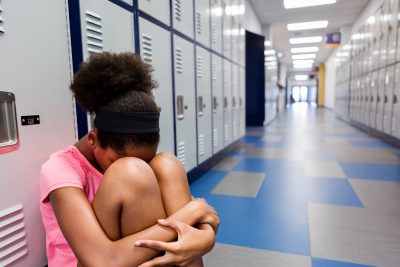 Uvalde School Shooting: The Mental Health Effects on Children. By Giulia Heyward / Capital B
Uvalde School Shooting: The Mental Health Effects on Children. By Giulia Heyward / Capital B
Shootings can have a long-lasting impact on a child, experts say. And Black children are most likely to experience it.
The nation’s most recent school shooting — which left 19 fourth-graders and two teachers dead in a Texas classroom — has again forced parents to question their children’s safety. While gun violence has become a near-universal fear for Americans, children from underrepresented backgrounds often are most susceptible. Capital B spoke with Charity Brown Griffin, a researcher at Winston-Salem State University in North Carolina and a licensed psychologist who works with children, about the effects of school shootings on children’s psyches and how race and class can impact the ways children heal. The conversation below was lightly edited for clarity and length. Read more
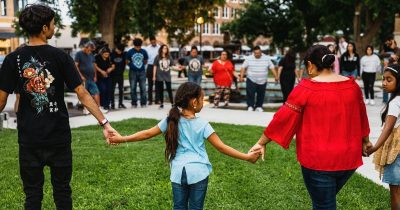 Black, Asian and Latino communities all faced mass shootings in 2 weeks. How they’re showing support. By and
Black, Asian and Latino communities all faced mass shootings in 2 weeks. How they’re showing support. By and
Black and Asian American and Pacific Islander communities are showing their solidarity with the Latino population in Uvalde at a time when calls to protect America’s most disadvantaged populations are becoming increasingly urgent. Latino and Hispanic residents make up 72.7 percent of Uvalde County’s population, according to census data. “I hope that we can use this moment to lean on one another,” said Chas Moore, the founder of the Austin Justice Coalition, a Black-led social justice organization. “The Black community just went through the terrible hate crime that happened in Buffalo. Now the Latino community is going through this. Our communities are mourning.” Read more
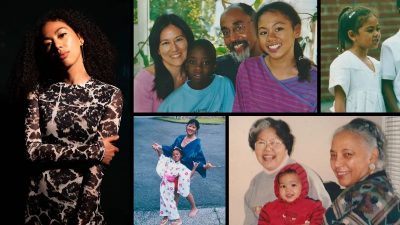 What It’s Like to Be Black and Asian in America. By Kimiko Matsuda Lawrence / Time
What It’s Like to Be Black and Asian in America. By Kimiko Matsuda Lawrence / Time
I look at the Asian people on the TV, smiling and cheering. But sitting here in this room full of Black people, in the body that I live in, I don’t feel like part of it. I feel guilty, both for not feeling fully able to join in the celebration of this moment that should be my right as an Asian American—and for getting something that everyone else in this room has yet to have. Because I’m also feeling what everyone else in this room is feeling. The pain of being forgotten, the betrayal of always being last, the knowledge that America will never pass a hate crime law for us. Because America itself is committing the hate crimes; America itself is killing us. Read more
 Block-by-block data show pollution’s stark toll on people of color. By Daryl Fears / Wash Post
Block-by-block data show pollution’s stark toll on people of color. By Daryl Fears / Wash Post
Finding the most polluted places in the San Francisco Bay area is simple, a new air quality analysis shows: Locate places where mostly Black, Latino, Asian and low-income residents live, and pay them a visit. The data released Tuesday by Aclima — a California-based tech company that measured the region’s air quality block-by-block for the first time — found that communities of color are exposed to 55 percent more nitrogen dioxide, which contributes to smog, than mostly White communities. Read more
 Institute pledges $1.5 billion to support scientists of color. By Lauren Lumpkin / Wash Post
Institute pledges $1.5 billion to support scientists of color. By Lauren Lumpkin / Wash Post
The effort from the Howard Hughes Medical Institute is named for longtime Md. university president Freeman A. Hrabowski III
One of the country’s largest biomedical research institutions has pledged $1.5 billion to support scientists of color in university laboratories, an effort heavily influenced by the work of outgoing University of Maryland Baltimore County (UMBC) President Freeman A. Hrabowski III, officials announced Thursday. The Howard Hughes Medical Institute (HHMI) will sponsor up to 150 early-career scientists — with a focus on scholars from underrepresented racial and ethnic backgrounds — over the next decade and cover their salaries, a research budget, equipment and other costs, the organization said in a statement. The support could total up to $8.6 million for each scholar, the institute said. Read more
Historical / Cultural
 It’s Not Looking Too Good for Government of the People, by the People and for the People. Jamelle Bouie / NYT
It’s Not Looking Too Good for Government of the People, by the People and for the People. Jamelle Bouie / NYT
The slaveholding South may not have been as politically unified as charged, but the institutions of American democracy were slanted toward slaveholders, who really did capture the state for their own ends. As much as possible, they used the power of the federal government to further their interests and stymie opposition, with the help of a like-minded majority on the Supreme Court that did not hesitate to act on their behalf. What must be understood is that the institutions that enabled this subversion of self-government are still with us, a practically indissoluble part of our constitutional order. Read more
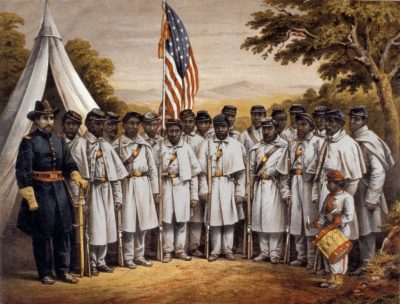 The Consequences of USCT Soldiering. By Holly A. Pinheiro Jr. AAIHS
The Consequences of USCT Soldiering. By Holly A. Pinheiro Jr. AAIHS
Black Soldiers in the Union Army, ca. 1863-64, Joseph T. Wilson (Slavery Images)
Solomon Wilson, a Thirty-First United States Colored Infantry (USCI) soldier, died in a regimental hospital on August 6, 1864. An unknown illness took his life while he served in Petersburg, Virginia. Wilson’s passing went unnoticed by many people who lived through the Civil War. On both the home front and front lines, death and violence were ever-present and, in many cases, inescapable. For instance, nearly 1.5 million casualties occurred during the war, which denotes those families and communities experienced significant losses. Read more
 When Jim Crow Violence Came to a Small New York Village. /NYT
When Jim Crow Violence Came to a Small New York Village. /NYT
Philip Dray’s book “A Lynching at Port Jervis” unearths the history of an 1892 murder of a Black man at the hands of a white mob.
On June 2, 1892, a white mob seized a Black man and hanged him from the high branch of an old maple tree in Port Jervis, N.Y. Several days later, a jury took all of an hour to deliver its verdict on what had happened: “Robert Lewis came to his death in the village of Port Jervis on June 2nd by being hanged by his neck by a person or persons unknown.” As Philip Dray puts it in his new book, “A Lynching at Port Jervis,” “The mob had not only ‘convicted’ and summarily executed Robert Lewis; it had now literally acquitted itself.” Read more
 H.B.C.U.s Have a Spirit All Their Own. Pop Culture Is Paying Attention.
H.B.C.U.s Have a Spirit All Their Own. Pop Culture Is Paying Attention.
Over the decades, what began as sporadic nods to Black campus experiences has grown into more: portrayals that are both authentic and that challenge stereotypes about H.B.C.U. college life. While there is room for more — and more varied — narratives, in 2022 it is no longer an anomaly to see a television show set at an H.B.C.U., or an H.B.C.U. marching band featured in a music video or commercial, or a real-life celebrity or athlete wearing H.B.C.U.-branded apparel. Read more
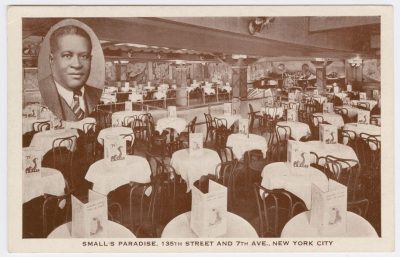 Black Music Sunday: Smalls’ in Harlem was truly a jazz paradise. By Denise Oliver Velez / Daily Kos
Black Music Sunday: Smalls’ in Harlem was truly a jazz paradise. By Denise Oliver Velez / Daily Kos
Let’s continue our #BlackMusicSunday tour of famed jazz clubs: We’ve been to the Cotton Club, the Village Vanguard, and Birdland so far. I’m not ready to exit the New York City jazz scene yet, so on this stop, we’re headed back uptown to Harlem, to Smalls’ Paradise. Smalls’ had the distinction of being the only Harlem nightspot owned by a Black businessman, Edwin Smalls. And also unlike many other Harlem venues, which catered to almost exclusively white audiences, Smalls’ was integrated. Read more
Site Information
Articles appearing in the Digest are archived on our home page. And at the top of this page register your email to receive notification of new editions of Race Inquiry Digest.
Click here for earlier Digests. The site is searchable by name or topic. See “search” at the top of this page.
About Race Inquiry and Race Inquiry Digest. The Digest is published on Mondays and Thursdays.
Use the customized buttons below to share the Digest in an email, or post to your Facebook, Linkedin or Twitter accounts.